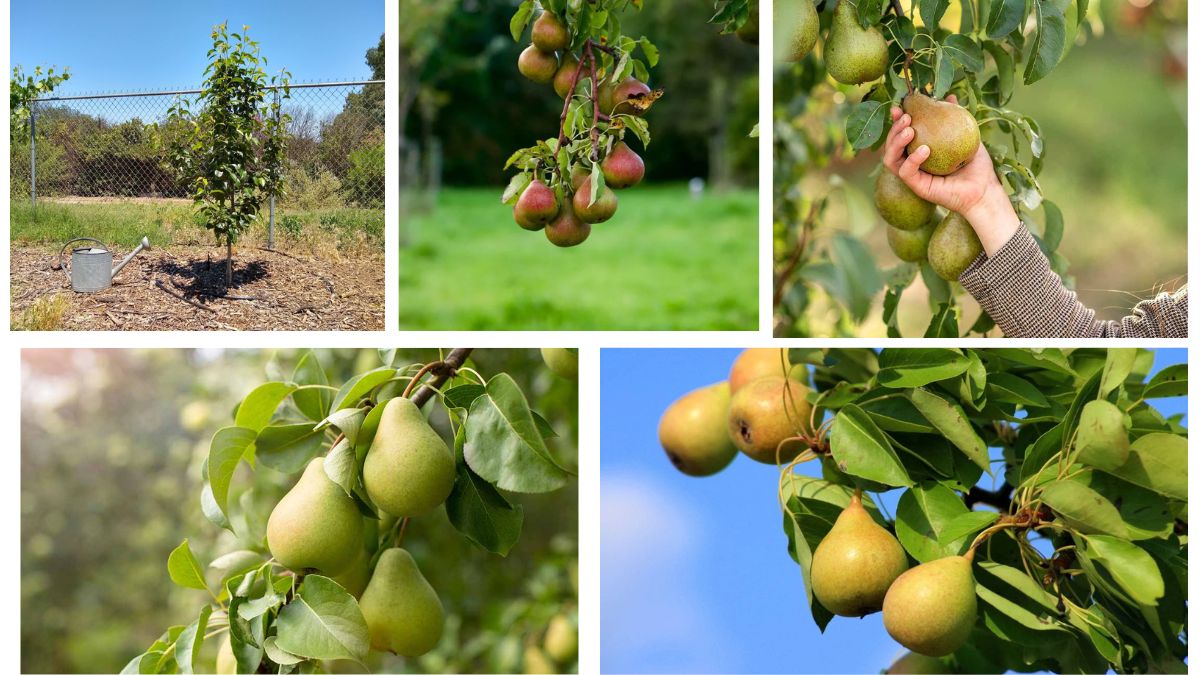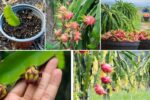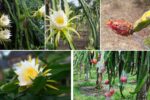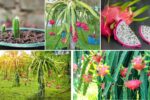Pear trees (Pyrus communis) are cherished for their delicate blossoms in spring, attractive foliage in summer, and sweet, juicy fruits in late summer to autumn. Whether grown in a backyard orchard, home garden, or container, pear trees reward growers with nutritious fruit and natural beauty. However, to ensure their health and productivity, one of the most essential aspects of their care is proper watering.
While pear trees are somewhat drought-tolerant once established, consistent and deep watering is crucial, especially during critical periods such as flowering and fruit development. Too little water leads to dry, small fruits, leaf scorch, and reduced yields. Too much, however, can result in root rot and fungal diseases. So — how often should you water a pear tree?
This comprehensive guide will walk you through watering needs at different growth stages, how climate and soil type affect watering schedules, and practical care tips to grow thriving, fruitful pear trees.
Why Is Watering Important for Pear Trees?
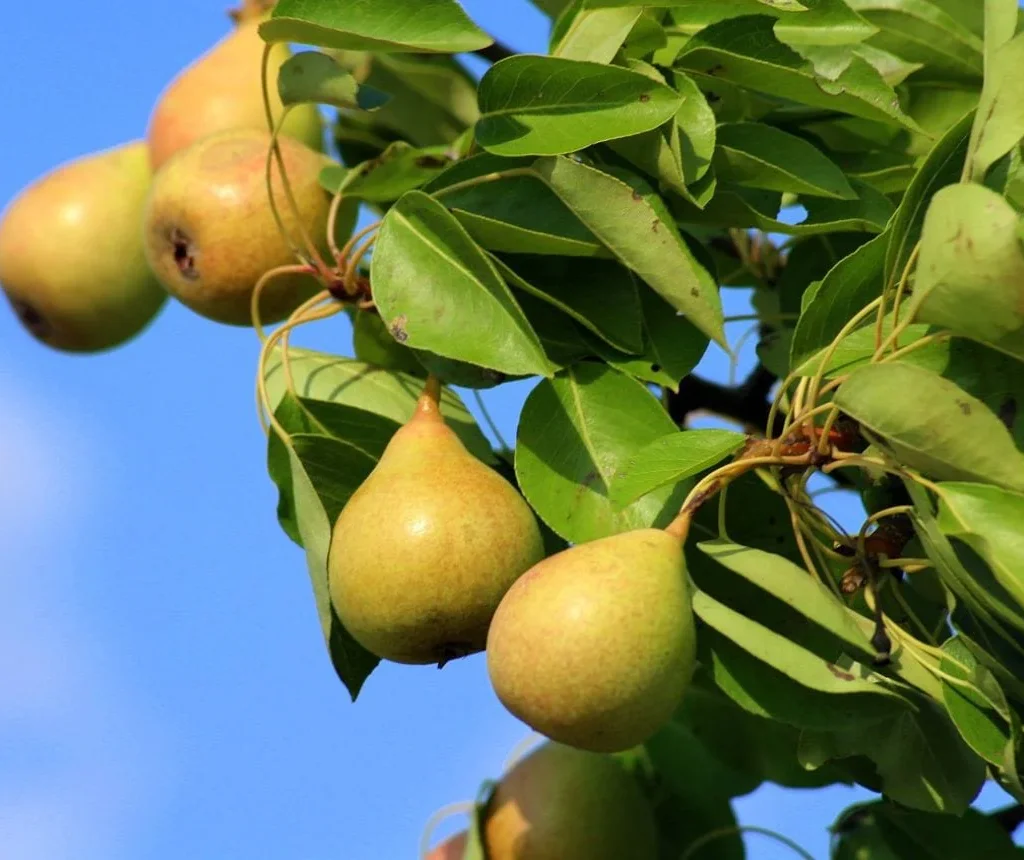
Like most fruit-bearing trees, water is fundamental for pear trees because it:
- Supports photosynthesis and nutrient transport.
- Promotes healthy leaf and shoot growth.
- Aids in fruit set and fruit size.
- Prevents water stress symptoms like wilting, premature leaf drop, and poor fruit quality.
- Maintains overall plant resilience against pests and diseases.
A carefully managed watering schedule improves fruit yield, size, and flavor while maintaining tree health throughout the growing season.
How Often Should You Water a Pear Tree?
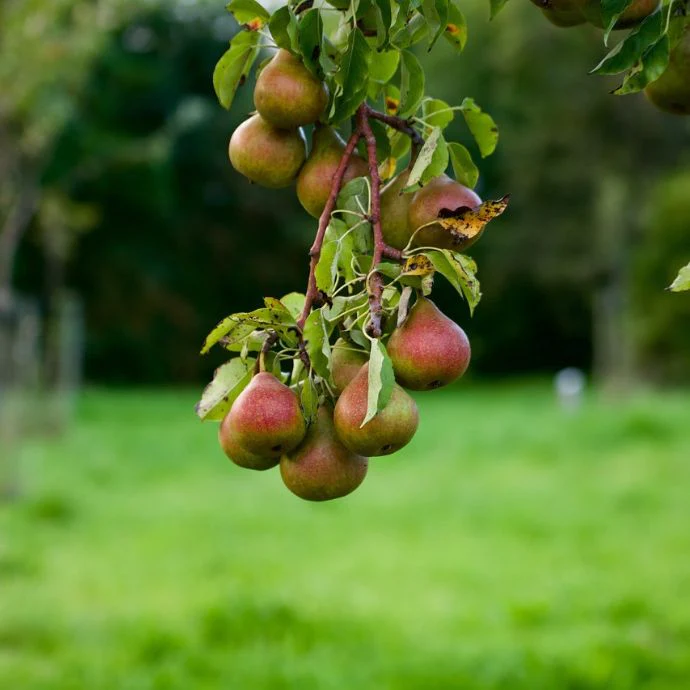
The watering frequency for pear trees depends on the tree’s age, stage of growth, soil conditions, and climate.
| Tree Age | Watering Frequency |
|---|---|
| Newly planted (first year) | Every 2–3 days initially, then 1–2 times a week |
| Young (1–3 years) | Every 5–7 days depending on rainfall and weather |
| Mature (3+ years) | Every 7–14 days during dry periods |
| Fruiting season | Increase watering frequency for consistent moisture |
| Dormant season (winter) | Reduce watering; water only during dry spells |
Seasonal Watering Requirements
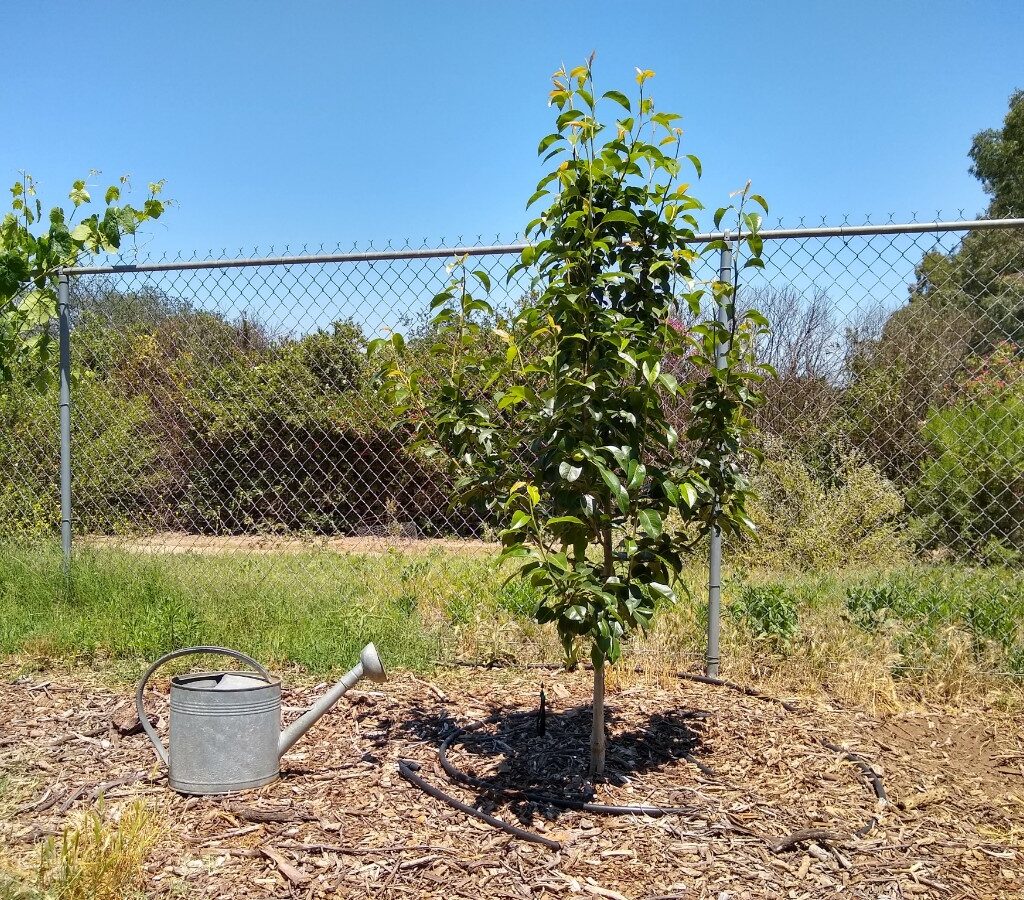
Spring
- Critical for bud break, flowering, and early leaf growth.
- Water deeply once or twice a week depending on rainfall.
- Consistent moisture ensures strong blossoms and a successful fruit set.
Summer
- This is the most water-demanding period as fruits develop.
- Increase watering to once every 5–7 days for mature trees.
- During heatwaves or dry, windy weather, water every 3–5 days to prevent leaf scorch and fruit drop.
Autumn
- As temperatures cool and growth slows, gradually reduce watering.
- Water every 10–14 days if rainfall is lacking, particularly while fruit ripens.
- After harvest, reduce watering to help the tree prepare for dormancy.
Winter
- Dormant pear trees require minimal water.
- In frost-free or dry climates, water once every 3–4 weeks.
- Avoid watering when soil is frozen or saturated to prevent root rot.
How Much Water Does a Pear Tree Need?
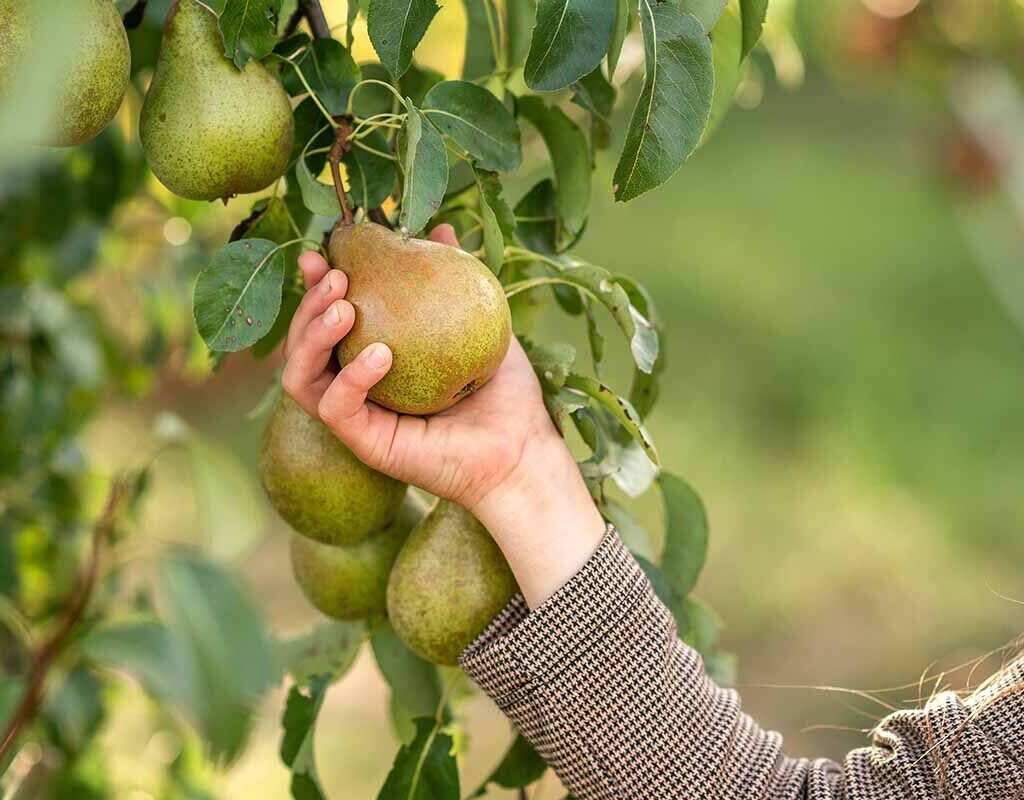
Deep, thorough watering encourages deep root growth and drought tolerance.
General Guidelines:
- Newly planted trees: 8–12 liters (2–3 gallons) per watering.
- Mature trees: 40–80 liters (10–20 gallons) per session during dry conditions.
- Container-grown pear trees: Water when the top 2 inches of soil feel dry.
Ensure water penetrates at least 12–18 inches deep to reach the active root zone.
Watering Container-Grown Pear Trees
Dwarf and semi-dwarf varieties grown in pots or tubs dry out much faster than in-ground trees.
Tips for container trees:
- Check soil moisture daily in warm months.
- Water when the top 1–2 inches feel dry.
- Ensure pots have drainage holes.
- Avoid letting water collect in saucers beneath the container.
In hot summer months, you may need to water daily or every other day.
Soil Type and Watering Frequency
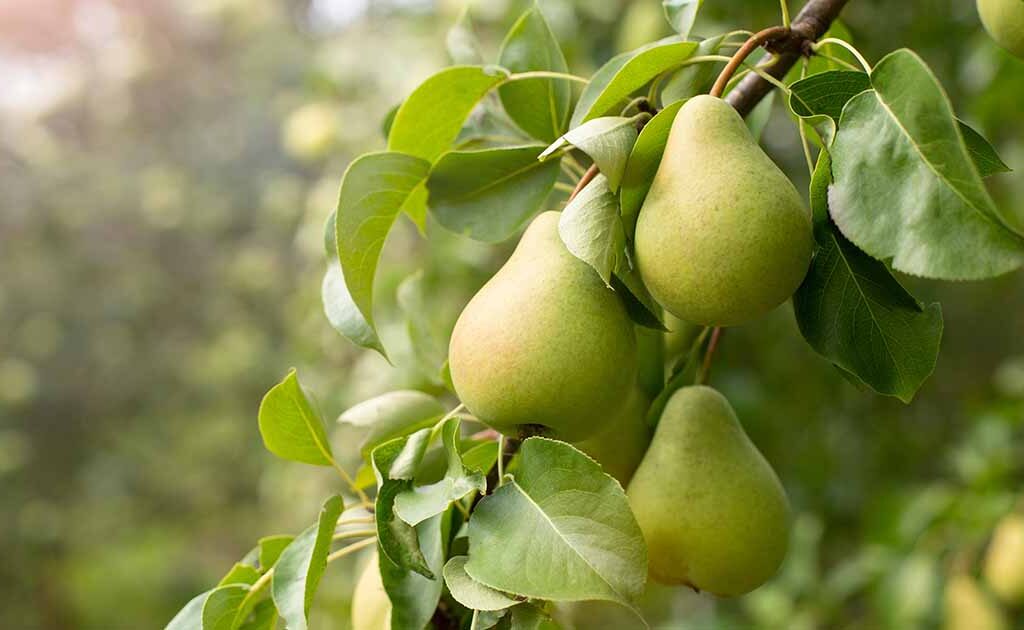
The soil’s ability to retain and drain water affects how often you should irrigate.
| Soil Type | Watering Frequency |
|---|---|
| Sandy soils | Quick-draining, requires more frequent watering |
| Loamy soils | Ideal balance of moisture and drainage |
| Clay soils | Retains water longer; water less often |
Amend heavy clay soils with organic compost or sand to improve drainage and reduce waterlogging risk.
Climate and Weather Considerations
In hot, arid, or windy regions:
- Increase watering during dry, hot spells.
- Mulch generously to conserve soil moisture.
In humid or rainy areas:
- Reduce watering frequency.
- Check soil moisture before watering to avoid waterlogging.
Best Time of Day to Water Pear Trees
The ideal times to water are:
- Early morning: Allows water to soak deeply and prepares the tree for daytime heat.
- Late afternoon: If mornings are missed, but avoid watering late evening to prevent overnight wetness, which fosters fungal growth.
Mulching for Moisture Retention
Mulch benefits pear trees by:
- Conserving soil moisture.
- Regulating soil temperature.
- Suppressing weed growth.
- Adding organic matter to the soil as it decomposes.
Recommended mulch materials:
- Straw
- Shredded bark
- Grass clippings
- Compost
Apply a 2–4 inch layer around the base, keeping it 6–8 inches away from the trunk to prevent rot.
Signs of Overwatering and Underwatering
Signs of Underwatering:
- Wilting or drooping leaves.
- Dry, cracked soil.
- Fruit drop or small, shriveled fruit.
- Premature leaf fall.
Signs of Overwatering:
- Yellowing leaves starting from the lower branches.
- Persistent wet soil.
- Root rot (mushy, discolored roots).
- Fungal diseases such as crown rot.
Pro Tip: Use a soil moisture meter or dig down 4–6 inches — if the soil feels dry at that depth, it’s time to water.
Common Watering Mistakes to Avoid
| Mistake | Effect | Solution |
|---|---|---|
| Shallow, frequent watering | Shallow roots prone to drought | Deep, infrequent watering |
| Overwatering during dormancy | Root rot and fungal issues | Reduce watering in winter |
| Watering during peak heat | Rapid evaporation, leaf scorch | Water early morning |
| Ignoring soil conditions | Uneven moisture and health issues | Adjust watering to your soil type |
When to Reduce or Stop Watering Pear Trees
After harvest:
- Reduce watering frequency as the tree prepares for dormancy.
- Avoid overwatering in autumn as the risk of root rot increases in cooler, wetter conditions.
- Stop regular watering in late autumn unless there’s an extended dry period.
In winter:
- Only water if the soil is dry and unfrozen for several weeks.
Conclusion
Watering a pear tree is an essential aspect of care that directly influences its health, growth, and fruit yield. Balancing water supply based on the tree’s age, soil type, weather, and season ensures a thriving tree that produces delicious, high-quality pears.
Deep, infrequent watering promotes strong, drought-resistant roots, while overwatering can invite diseases and stress. By applying mulch, monitoring soil moisture, and adjusting for environmental conditions, gardeners can maintain optimal watering practices for their pear trees.
With consistent, thoughtful care and proper hydration, your pear tree will reward you with abundant, juicy, and flavorful fruit for years to come.
